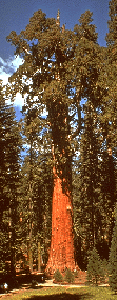Trees Defy Aging Process
Friday, January 17th, 2014January 17, 2014
A long-held biological assumption about living things–that growth slows or stops with age–has been disproven, report scientists in the latest issue of the journal Nature. Like most living things on Earth, animals, including humans, grow until they reach maturity, the point at which they stop growing. Then, over a lifetime, cells change and break down, eventually leading to death, a process called senescence. But trees have been found to be free from this growth limit.
A worldwide study of trees has led to the discovery that trees continue to grow even as they grow old. “We didn’t think that things could have unlimited growth potential,” commented Nathan Phillips of Boston University. “There’s been a long history of that kind of thinking.” In fact, the growth rate of trees not only does not slow with age but actually accelerates. “This finding contradicts the usual assumption that tree growth eventually declines as trees get older and bigger,” stated Nate Stephenson, the study’s lead author and a forest ecologist with the U.S. Geological Survey. “What we found was the exact opposite. Tree growth rate increases continuously as trees get bigger and bigger.”

The world's largest tree, according to volume of wood, is the General Sherman Tree in Sequoia National Park in California. This giant sequoia ranks as one of the oldest living things on the earth. It is between 2,200 and 2,500 years old. (Richard C. Burns, National Park Service)
An international team of scientists surveyed nearly 700,000 trees in tropical, subtropical, and temperate zones across 6 continents. Scientists from 16 nations compiled the mass growth rates of more than 400 tree species. They found that for most species, mass growth rate increases continuously with tree size. The scientists found while trees do stop growing taller, they continue to pack on more and more mass by growing wider. The lifetime of a tree appears to be limited only by disease, drought, fire, high winds, or human destruction.
“It also means that big, old trees are better at absorbing carbon [dioxide] from the atmosphere than has been commonly assumed,” declared Stephenson. That means that the oldest members of a forest absorb more carbon dioxide from of the air than younger trees. “Not only do they hold a lot of carbon, but they’re adding carbon at a tremendous rate,” noted Stephenson, pointing out the importance of old-growth forests. “And that’s going to be really important to understand when we’re trying to predict how the forests are going to change in the future–in the face of a changing climate or other environmental changes.”
Additional World Book articles:
- Trees Under Threat (a special report)
- Why Forest Need to Burn (a special report)


